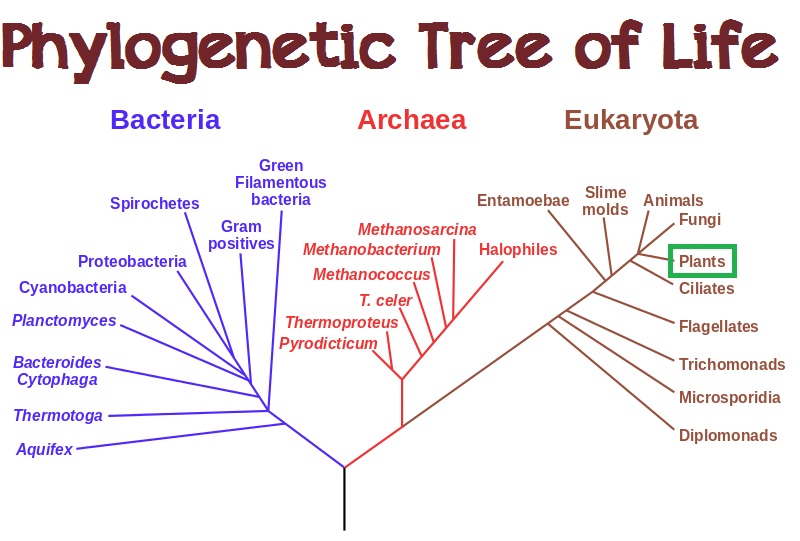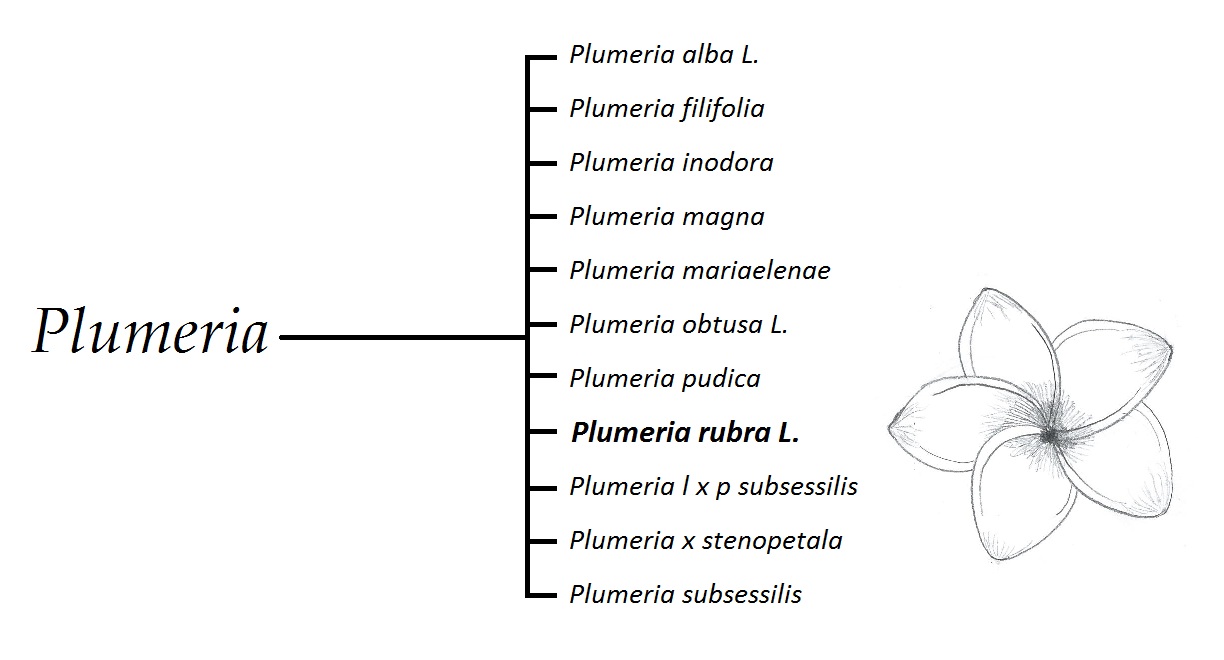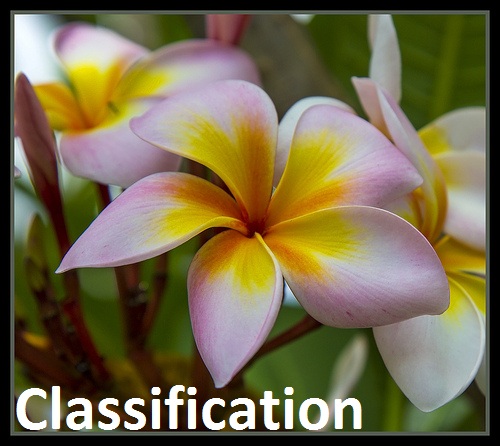Domain
Eukarya

All organisms in the domain Eukarya have membrane-bound organelles and
have a 'true nucleus.' The cells of eukaryotes are typically 10 times larger
than the cells of prokaryotes. In the eukaryotic cells there are multiple
chromosome and they are linear. Lastly, organisms in the eukarya undergo mitosis
as a mean of reproduction. Some examples of organisms in the domain Eukarya
range from protists (such as
Red Tide), to plants (such as a
calla lily), to fungi (such as the
deadly parasol), to animals (such as the
Humboldt Squid).
Where plants fall into the "grand scheme of things."
Phylogenetic Tree
of Life modified from Eric Gaba via Wikimedia Commons
Super-group
Archaeplastida
All Archaeplastida have two membranes surrounding its chloroplasts, which are
the plastids that allow for photosynthesis to occur. This groups includes
organisms such as the green algae which you may find in the ocean and the land
plants, such as the tree that you may find looking out your window.
Kingdom
Plantae
The Plantae include organisms like the mosses, the giant Red Woods, and the
kiwi fruit.
 They all undergo alternation of generations as a process of
reproduction. Furthermore, they all have chloroplasts and chlorophyll which are
the main ingredient for photosynthesis. Photosynthesis is the process which
converts sunlight into energy that the plant can use.
They all undergo alternation of generations as a process of
reproduction. Furthermore, they all have chloroplasts and chlorophyll which are
the main ingredient for photosynthesis. Photosynthesis is the process which
converts sunlight into energy that the plant can use.
Phylum
Magnoliophyta
The Magnoliophyta, also called the "angiosperms," are known as the flowering
plants. Some other examples of angiosperms include lilies (like
Lily of the Valley),
lemongrass, oaks, and
Zizania aquatica, or wild rice. Both monocots and eudicotyledons are
included in this phylum. They have true roots, stems, and leaves, as well as
seeds that are enclosed by a shell-like coating. Pollen travels from plant to
plant by wind, water, or animal dispersion.
Class
Magnoliopsida
This class includes just the eudicotyledons, dicots for short, which typically
have flower parts in either 4's or 5's. The leaves usually have a netlike
venation. They exhibit secondary growth which means that as well as growing up,
they grow out in girth. Some examples of dicots include maples, sunflowers,
and
Salvia officinalis,
 or sage.
or sage.

Order
Gentianales
The flowering plants within the Gentianales order have leaves that are opposite
or whorled with two or more leaves per node. The flowers are usually "showy"
with similar regular shapes and sizes with the petals usually joined. There is
variation with the fruits but they typically have numerous seeds, and the ovary
is superior in the flower.
Family
Apocynaceae
 Organisms within the Apocynaceae family, also called dogbane family, have fruit in the form of a berry, drupe
(like the middle part of a peach, plum, or apricot), or more frequently just 2
follicles (dry, weed-like appearance fruit) opening inward. The leaves are
opposite or whorled and rarely alternate, which means that they only have a
single leaf attached at one location, or node.
Organisms within the Apocynaceae family, also called dogbane family, have fruit in the form of a berry, drupe
(like the middle part of a peach, plum, or apricot), or more frequently just 2
follicles (dry, weed-like appearance fruit) opening inward. The leaves are
opposite or whorled and rarely alternate, which means that they only have a
single leaf attached at one location, or node.
Member of the dogbane family
Genus
Plumeria
The genus of Plumeria are deciduous shrubs or trees that have
branches like candelabra. The fragrant flowers are either white or shades of
red/pink.
P. rubra typically exhibit red-toned colors, although the colors can vary
greatly. Other species include
Plumeria alba which have white flowers, and Plumeria
obtusa which have yellow flowers. Many morphological
characteristics, which are based on visible traits, were taken into account in
the Plumeria genus.

Plumeria phylogenetic tree & Houselog's drawing of Plumeria
rubra
Species
P. rubra
 The Plumeria rubra is commonly
called Frangipani or temple tree. Melia is a Hawaiian term, while
rubra derives from the Latin
ruber which means red. Frangpani is an
ornamental tree with distinctive perfumed scent. The flowers have five, rarely
4, petals. Most are white or pink with yellow in the center. The deciduous tree
blooms in June through November, and inhabits tropical climates.
The Plumeria rubra is commonly
called Frangipani or temple tree. Melia is a Hawaiian term, while
rubra derives from the Latin
ruber which means red. Frangpani is an
ornamental tree with distinctive perfumed scent. The flowers have five, rarely
4, petals. Most are white or pink with yellow in the center. The deciduous tree
blooms in June through November, and inhabits tropical climates.
Continue on to learn about the characteristics that have allowed the Frangipani
to adapt to its habitat.
![]()
There's no place like Home
